At GreenWave, we recognize that post-harvest processing is still a bottleneck in the industry, and it’s something we’re actively working to solve. A wing of our programming is dedicated to help spur market development and create linkages between farmers and buyers. We’ve launched the Seaweed Source, a free app that streamlines connections between seaweed businesses. Qualified companies can share their supply or purchasing needs, learn about the ecosystem, and tap into opportunities for growth and collaboration. Additionally we run the Kelp Climate Fund, which offers a subsidy to farmers for the positive environmental benefits of their kelp, and helps bridge the gap until the blue carbon market has been fully established. Learn more about these programs here.
Back to: Kelp Farming 101
Naturally, one of the first things people want to know when thinking about starting a kelp farm is how much they can expect to earn from their crop.
The answer varies dramatically based on how much you grow, whom you sell to, what form you sell it in, and where your farm is located. Generally, in the U.S. market, kelp is being sold in one of two ways: for either food or non-food use. At this time, food remains the primary market for kelp, but new product innovations are emerging constantly.
Hover over the images below to learn more about the wide range of industries that currently leverage seaweed.
For food, raw kelp can be sold in a minimally-processed, fresh or frozen form directly to individual consumers or wholesale to restaurants.
The pristine, trimmed blades of the kelp can be eaten raw, cooked as a vegetable, or processed into a specialty, value-added product, like pickles or kimchi. Some companies are working with dried kelp, dehydrating the blade and crumbling it into seasonings. Others are stabilizing the kelp and using it as an ingredient, such as in a processed kelp burger or kelp jerky.
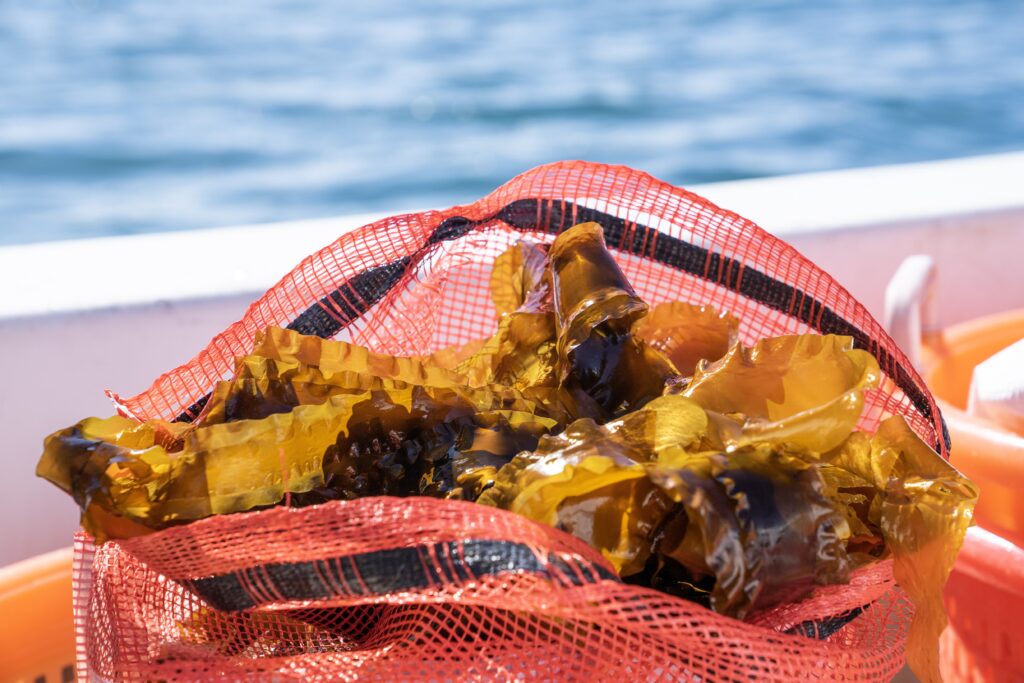
Holdfasts and biofouled portions of the blade are generally better suited for non-food uses.
These may be used for biostimulants and compost, animal feed, or potentially processed into plastic alternatives. In the U.S., the domestic market for sugar kelp is still developing, with new products frequently coming online. Lots of companies and industries have shown interest in working with kelp, and there’s ongoing research as to how domestically-farmed kelp can be used as an input for pharmaceuticals or biofuels at scale. However, these markets are still many years away from being fully realized.
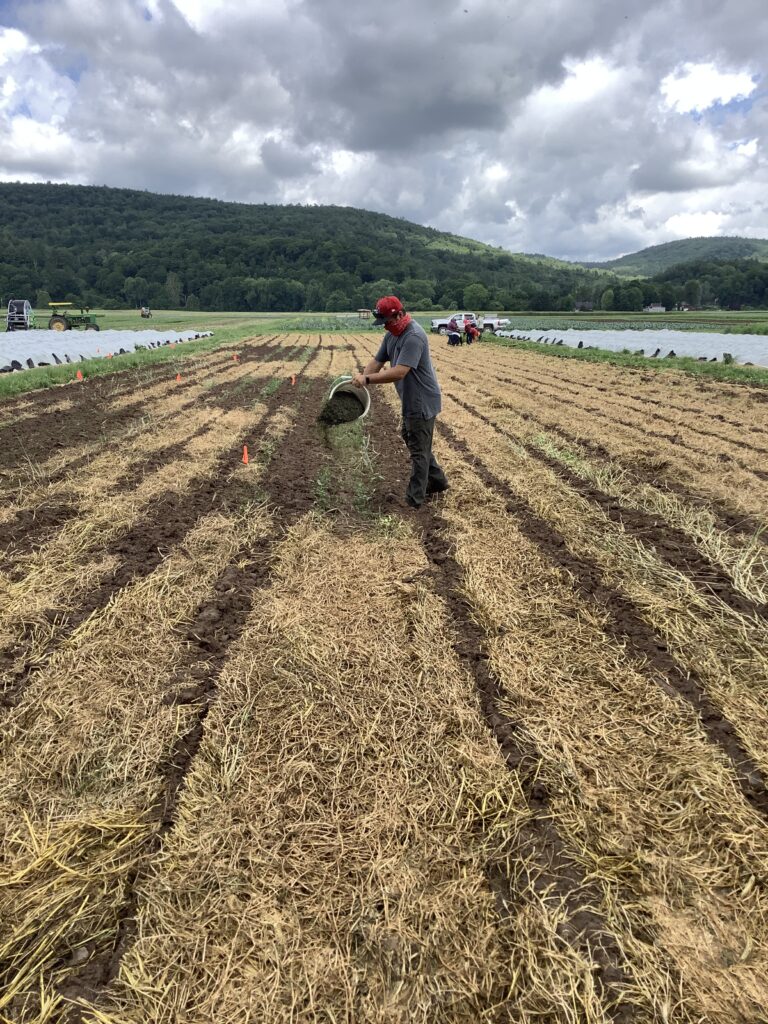
On the East Coast, farmers who are within driving distance to big cities, like New York and Boston, have been able to successfully market a small portion of their crop directly to restaurants and consumers.
The benefit of this strategy is that farmers have been able to capture a high price point, upwards of $20 per pound, for fresh, wet kelp. However, it takes a lot of work to brand and market a product, make and sustain connections with buyers, and deliver fresh kelp door to door. These types of buyers tend to only want small quantities (in the 10s of pounds), so you can’t sell very much at a time.
Other farmers are selling their kelp wholesale to processors or value-added product companies as an ingredient input.
The pro of selling to a wholesale buyer is that you can move thousands of pounds of kelp at one time, which enables a more efficient harvest and processing schedule. The con is that there aren’t many wholesale buyers at this time, though the number is increasing every year.
The price you can get varies dramatically based on who you sell to, how and where.
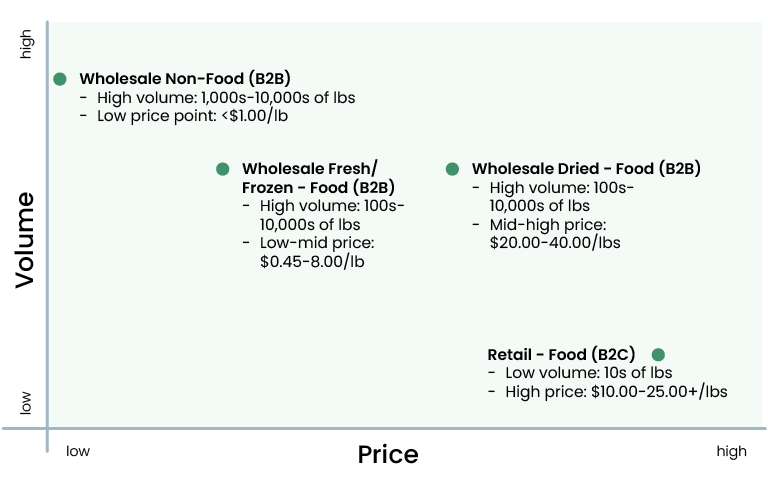
Price point also depends on processing. You’ll be able to command a higher price for a dried product than fresh or frozen kelp.
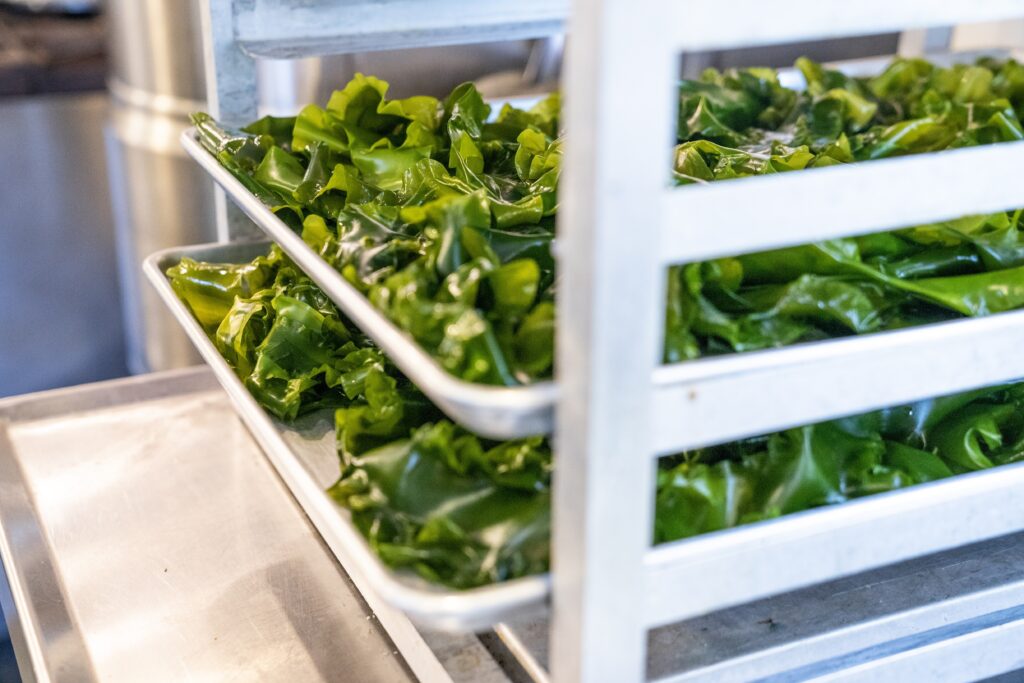
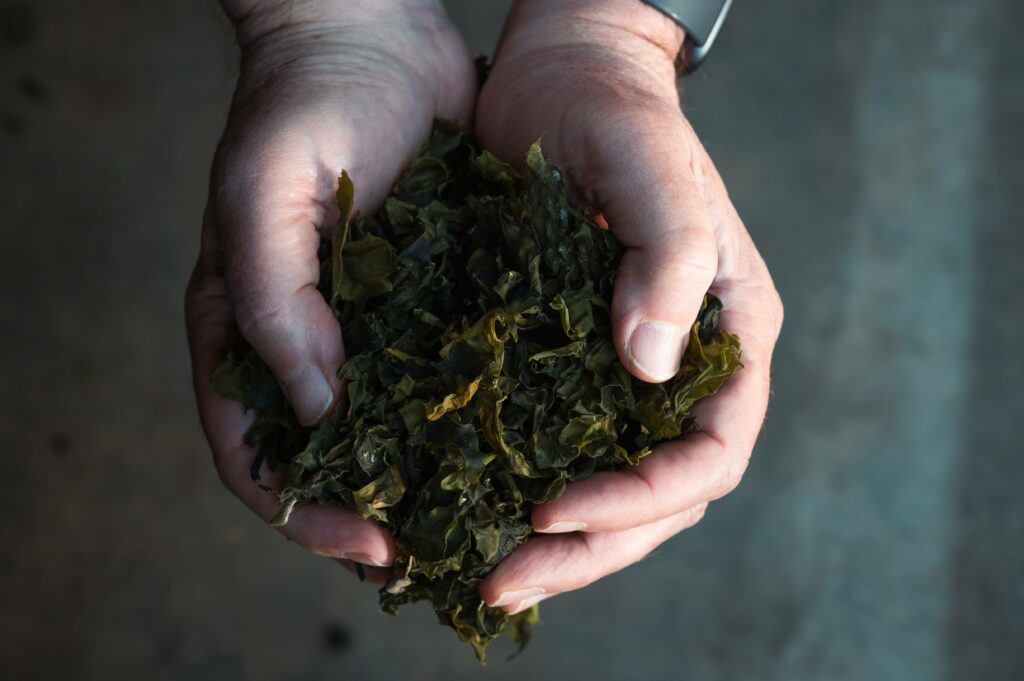
Even if you have a market in mind, it likely won’t be able to take all of your product. When you think about sales channels for your kelp, we really recommend adopting a “whole leaf” marketing strategy. Think about different ways you can get value out of different parts of your kelp, salvage value if you have a low-quality harvest, and, in general, diversify your sales streams.
Kelp, like any new product or commodity, is still finding its footing in the U.S. market. But it also has some inherent attributes that pose some additional processing challenges. One is that there is a relatively narrow window between when kelp comes out of the water and when it needs to be stabilized or undergo a form of preliminary processing (i.e. drying or freezing). This typically happens within the first 8-24 hours after harvest. Often, large quantities of kelp become ready all at once and need to be harvested quickly to reduce the chance of biofouling, which puts additional strain on processors.
These attributes are paired with a lack of existing land-based infrastructure to support harvest and processing. At the moment, there are only a few independent processors for kelp, and they’re buying exclusively from their regions. A lot of time and education is required to convince existing seafood or agricultural processors to work with kelp.
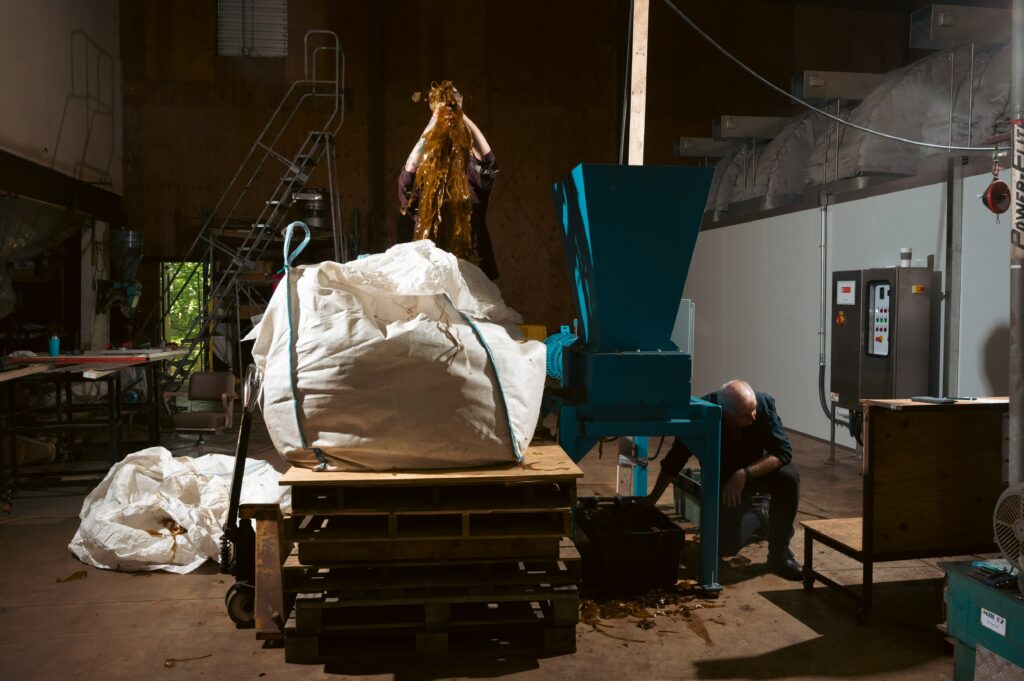
Another challenge many farmers face in bringing their crop to market is that food safety regulations for kelp are not widely established, and they vary state by state.
However, as of February 2021 the FDA has indicated that kelp is a raw agricultural commodity, which makes us hopeful that more federal guidance is on the way. Despite these challenges, farmers across the country are connecting with buyers for their kelp, and more and more companies are looking to integrate kelp into their product lines.


